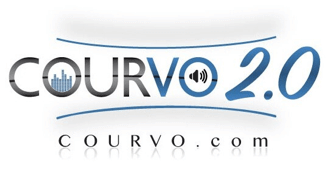With gratitude to voice coach par excellence Nancy Wolfson, I reprint the following she sent me yesterday by e-mail.
Let me just point out that VERLYN KLINKENBORG (the author) was born the same year as me, to a midwest farming community (like me). That's about where the similarities end. He's pretty tight with the NY Times and has written several books.
His observations below about the spoken word are very well contemplated.
…and you thought it was only voice-talking!
CourVO
2009
Observer
Some Thoughts on the
Lost Art of Reading Aloud
Sometimes the best way to
understand the present is to look at it from the past. Consider audio books. An
enormous number of Americans read by listening these days — listening aloud, I
call it. The technology for doing so is diverse and widespread, and so are the
places people listen to audio books. But from the perspective of a reader in,
say, the early 19th century, about the time of Jane Austen, there is something
peculiar about it, even lonely.
In those days, literate
families and friends read aloud to each other as a matter of habit. Books were
still relatively scarce and expensive, and the routine electronic diversions we
take for granted were, of course, nonexistent. If you had grown up listening to
adults reading to each other regularly, the thought of all of those solitary
21st-century individuals hearkening to earbuds and car radios would seem
isolating. It would also seem as though they were being trained only to listen
to books and not to read aloud from them.
It’s part of a pattern.
Instead of making music at home, we listen to recordings of professional
musicians. When people talk about the books they’ve heard, they’re often talking
about the quality of the readers, who are usually professional. The way we
listen to books has been de-socialized, stripped of context, which has the
solitary virtue of being extremely convenient.
But listening aloud,
valuable as it is, isn’t the same as reading aloud. Both require a great deal of
attention. Both are good ways to learn something important about the rhythms of
language. But one of the most basic tests of comprehension is to ask someone to
read aloud from a book. It reveals far more than whether the reader understands
the words. It reveals how far into the words — and the pattern of the words —
the reader really sees.
Reading aloud recaptures
the physicality of words. To read with your lungs and diaphragm, with your
tongue and lips, is very different than reading with your eyes alone. The
language becomes a part of the body, which is why there is always a curious
tenderness, almost an erotic quality, in those 18th- and 19th-century literary
scenes where a book is being read aloud in mixed company. The words are not mere
words. They are the breath and mind, perhaps even the soul, of the person who is
reading.
No one understood this
better than Jane Austen. One of the late turning points in “Mansfield Park”
comes when Henry Crawford picks up a volume of Shakespeare, “which had the air
of being very recently closed,” and begins to read aloud to the young Bertrams
and their cousin, Fanny Price. Fanny discovers in Crawford’s reading “a variety
of excellence beyond what she had ever met with.” And yet his ability to do
every part “with equal beauty” is a clear sign to us, if not entirely to Fanny,
of his superficiality.
I read aloud to my
writing students, and when students read aloud to me I notice something odd.
They are smart and literate, and most of them had parents who read to them as
children. But when students read aloud at first, I notice that they are trying
to read the meaning of the words. If the work is their own, they are usually
trying to read the intention of the writer.
It’s as though they’re
reading what the words represent rather than the words themselves. What gets
lost is the inner voice of the prose, the life of the language. This is
reflected in their writing, too, at first.
In one realm — poetry — reading aloud
has never really died out. Take Robert Pinsky’s new book, “Essential Pleasures:
A New Anthology of Poems to Read Aloud.” But I suspect there is no going back.
You can easily make the argument that reading silently is an economic artifact,
a sign of a new prosperity beginning in the early 19th century and a new
cheapness in books. The same argument applies to listening to books on your
iPhone
. But what I would suggest is that our idea of reading is incomplete,
impoverished, unless we are also taking the time to read
aloud.
Nancy
Wolfson
Braintracks
Audio
www.braintracksaudio.com
http://twitter.com/
Voice Over Coaching • Casting • Production •
Success


